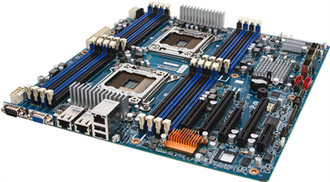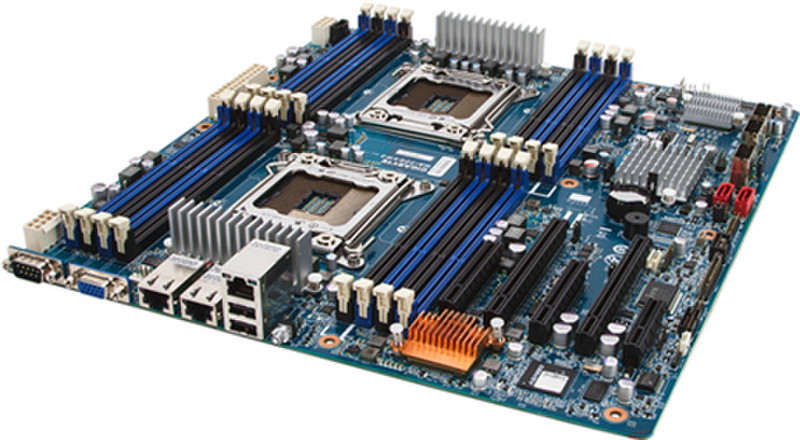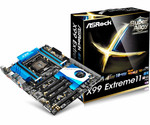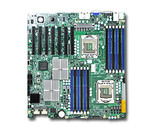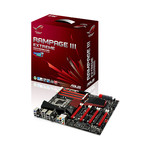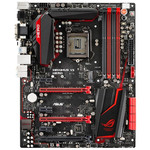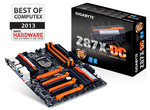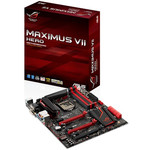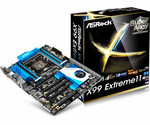目錄的
-
目錄的
- Antiquitäten & Kunst
- Auto & Motorrad: Fahrzeuge
- Baby
- Bücher
- Camping & Outdoor
- Feinschmecker
- Haustierbedarf
- Heimwerken & Garten
- IT和电子
- Kleidung & Accessoires
- Modellbau
- Musik
- PC- & Videospiele
- Sammeln & Seltenes
- Spielzeug
- TV, Video, DVD
- Telekommunikation
- Uhren & Schmuck
- Wellness & Beauty
- fashion & lifestyle
- institutional food services equipment
- medical equipment, accessories & supplies
- 个人护理
- 休闲爱好
- 办公设备,用品和配件
- 商业与工业
- 家居,建筑,装修
- 家用电器
- 摩托车及配件
- 武器和弹药
- 照相机
- 花园和庭院
- 运动,娱乐及休闲
- 食物
- 高保真音響
Filters
Search
Gigabyte GA-7PESH2 Intel C602 Socket R (LGA 2011) motherboard
凡购买和价格 (Advertising *)
顶部
技术特点
顶部
内存参数
| 可支持内存时钟速度 | 1066, 1333, 1600, 1866 MHz |
|---|---|
| 无错误检测和更正 | Y |
| 错误更正代码 | Y |
| 支持的内存类型 | DDR3-SDRAM |
| 内存电压 | 1.35, 1.5 V |
| 内存通道支持 | Quad |
| 内存插槽类型 | DIMM |
| 最大UDIMM内存 | 8 GB |
| 最大RDIMM内存 | 32 GB |
| 內存插槽数量 | 16 |
背板输出端口
| 串口数量 | 1 |
|---|---|
| VGA(D-SUB)端口数量 | 1 |
处理器
| SMP(适用于表面安装的封装形式)处理器的最大数量 | 1 |
|---|
基本輸出輸入系統/BIOS
| 基本输入输出系统类型 | AMI |
|---|---|
| 清除CMOS跳线 | Y |
内置输入/输出系统
| USB 2.0接口 | 1 |
|---|---|
| ATX电源接头 | Y |
| TPM(可信任安全平台模组)接口 | Y |
| IPMI 2.0插槽 | Y |
| SATA III连接器数量 | 2 |
| CPU风扇接口 | Y |
性能
| 可支持的Linux操作系统 | RedHat EL Linux 5.0 |
|---|---|
| 主板芯片组系列 | Intel |
| 组件应用 | PC |
扩展槽
| PCI Express x16 插槽 | 2 |
|---|---|
| PCI Express x8插槽 | 2 |
| PCI Express × 4插槽 | 1 |
图像
| 图形适配器系列 | Aspeed |
|---|
内容包装
| 包括驱动器 | Y |
|---|
另外
| 主板晶片 | Intel C602 |
|---|---|
| 以太网连接器 | Y |
| 以太网路(RJ-45)连接接口数量 | 3 |
LGA 2011, Intel C602, ECC & non-ECC UDIMM/RDIMM, SATA, 10G Base-T Ethernet LAN, E-ATX / SSI EEB
High Performance Computing Board
GIGABYTE introduces its latest high end server motherboard based on Intel®’s brand new Xeon® processor E5-2600 product family and the Intel® C602 chipset. This dual socket motherboard is addressed to enterprise requirements for top performance computing in server / datacenter environments.
Intel® Xeon® Processor E5-2600 V2 Product Family
Deployable through a simple BIOS update, the support of the Intel Xeon processors E5-2600 V2 product family delivers the benefits of the 22nm tri-gate process technology to the high end server industry. Those benefits include, among others, higher frequencies, higher core counts (up to 12 cores / 24 threads) and larger last-level caches, but especially a much more varied mix of core/frequencies with notably the introduction of a new dual socket workstation segment. This new die shrink also allows for overall energy efficiency increase, with up to 30% average decrease in idle power consumption.
Finally, virtualization applications will benefit from increased performance thanks to the Advanced Programmable Interrupt Controller (APIC) technology, and more security features are included in the mix as well, such as the Intel® Platform Protection Technology with OS Guard, and Intel® Data Protection Technology with Secure Key.
Faster Memory, With GIGABYTE Only
Always eager to go beyond the industry standards, GIGABYTE’s engineering has enabled through its capabilities in design, PCB layout and BIOS fine-tuning the support of 1866 MHz memory frequency running at higher DIMM population (8 DIMMs per socket) where Intel’s standard and the rest of the market’s products will typically operate memory speed downgrade and support 1866 MHz at lower DIMM population only (4 DIMMs per socket). GIGABYTE therefore offers at launch on its 2011 socket based products this unique feature which will benefit to high density and memory intensive applications, such as high frequency trading, telecommunication networks, mobile data transfers, and so on.
GIGABYTE introduces its latest high end server motherboard based on Intel®’s brand new Xeon® processor E5-2600 product family and the Intel® C602 chipset. This dual socket motherboard is addressed to enterprise requirements for top performance computing in server / datacenter environments.
Intel® Xeon® Processor E5-2600 V2 Product Family
Deployable through a simple BIOS update, the support of the Intel Xeon processors E5-2600 V2 product family delivers the benefits of the 22nm tri-gate process technology to the high end server industry. Those benefits include, among others, higher frequencies, higher core counts (up to 12 cores / 24 threads) and larger last-level caches, but especially a much more varied mix of core/frequencies with notably the introduction of a new dual socket workstation segment. This new die shrink also allows for overall energy efficiency increase, with up to 30% average decrease in idle power consumption.
Finally, virtualization applications will benefit from increased performance thanks to the Advanced Programmable Interrupt Controller (APIC) technology, and more security features are included in the mix as well, such as the Intel® Platform Protection Technology with OS Guard, and Intel® Data Protection Technology with Secure Key.
Faster Memory, With GIGABYTE Only
Always eager to go beyond the industry standards, GIGABYTE’s engineering has enabled through its capabilities in design, PCB layout and BIOS fine-tuning the support of 1866 MHz memory frequency running at higher DIMM population (8 DIMMs per socket) where Intel’s standard and the rest of the market’s products will typically operate memory speed downgrade and support 1866 MHz at lower DIMM population only (4 DIMMs per socket). GIGABYTE therefore offers at launch on its 2011 socket based products this unique feature which will benefit to high density and memory intensive applications, such as high frequency trading, telecommunication networks, mobile data transfers, and so on.
類似的優惠
顶部
-
支付方式
我们接受:


